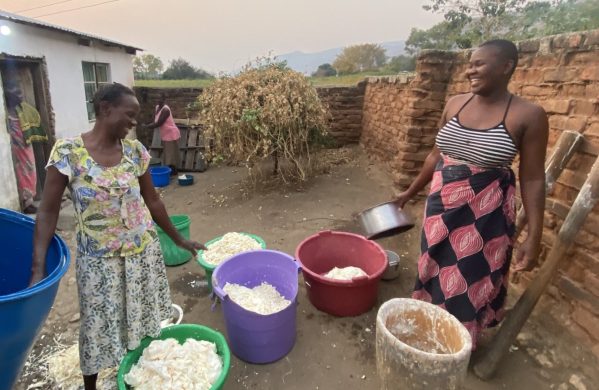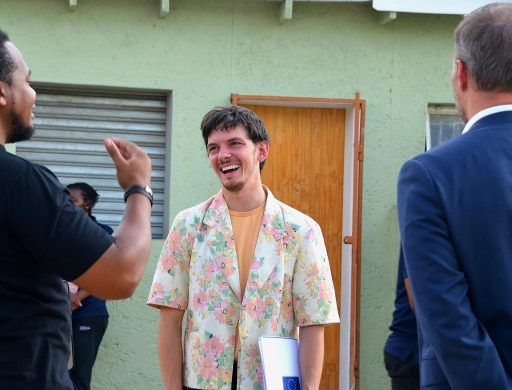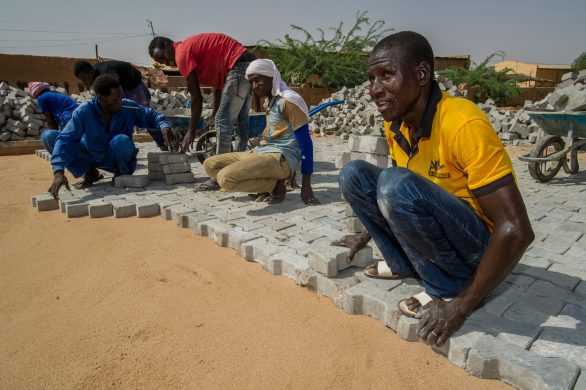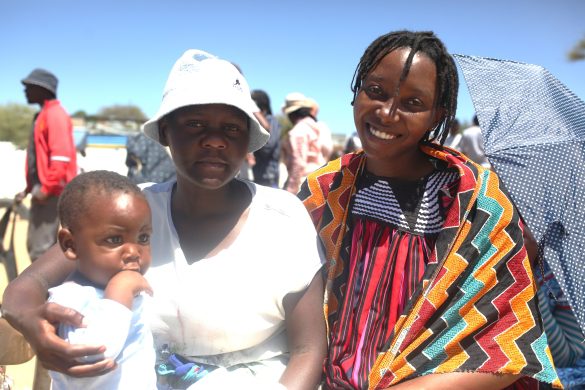Volta er en af Vestafrikas store livgivende floder. Den udspringer i Burkina Faso, der tidligere hed Øvre Volta, og løber gennem Ghana ud i Guineabugten. Flodens tre grene kaldes Hvide Volta, Sorte Volta og Røde Volta.
DAKAR, 23 July 2013 (IRIN): Drastic water loss in West Africa’s River Volta basin – covering Benin, Burkina Faso, Ivory Cost, Ghana, Mali, and Togo – could deprive millions of people of food and hydropower in coming years due to climate change, researchers predict.
Higher average temperatures, seen to be rising by up to 3,6 degrees Celsius over the next century, and reduced rainfall could see water flows in the basin drop by 24 percent by 2050, and 45 percent by 2100, according to a new study by the International Water Management Institute (IWMI).
By 2050 there would be enough water for only 50 percent of current hydropower production, the study found. Ghana’s Akosombo dam, the world’s largest man-made lake, currently generates 1.020 megawatts.
The roughly 24 million people living in the basin are mainly dependent on agriculture, which accounts for around 40 percent of the region’s economic output.
This population, however, is expected to reach 34 million by 2015, up from 19 million in 2000, adding to pressure on water resources.
The warnings are already there
Matthew McCartney, the study’s lead author, told IRIN climate change effects were already being felt in the basin.
“Climate change warning signs in the Volta Basin are an upward trend in mean (middel) annual temperature,” he said, adding:
“Because of the natural variability, rainfall trends are much harder to assess than temperature, but there is some evidence of declining trends in rainfall, at least over Ghana.”
Climate change would make planned additional water storage in the basin unattainable.
In the absence of climate change about 78.000 hectares would be irrigated (kunstvandet) and 11.800 gigawatt hours per year of hydroelectric power would be generated in the coming years, explained Tim Williams, IWMI’s director for Africa.
But, he said, climate change would mean that “only about 75 percent of the irrigated area will be possible and only about 52 percent of the potential hydroelectricity will be generated by 2050.”
“We do notice two trends: The increasing demand on the available water resources which is population driven – that is already affecting the water availability”, he told IRIN, noting:
“On top of that there is anecdotal evidence by farmers who point to shifts in the onset (begyndelsen) of rains as well as variability within the season in terms of frequency of dry spells (tørkeperioder) within the growing season,” he told IRIN.
The study’s predictions are based on a moderate impact scenario which the report says are “relatively conservative, but not overly cautious…”
“In general, climate change predictions point to extreme weather events. A middle impact climate change scenario mimics (efterligner) the way nature works in a long period of time,” Williams said.
Solutions
Læs videre på
http://www.irinnews.org/report/98457/worrying-climate-outlook-for-west-africa-s-volta-basin
Se også http://en.wikipedia.org/wiki/Volta_River














